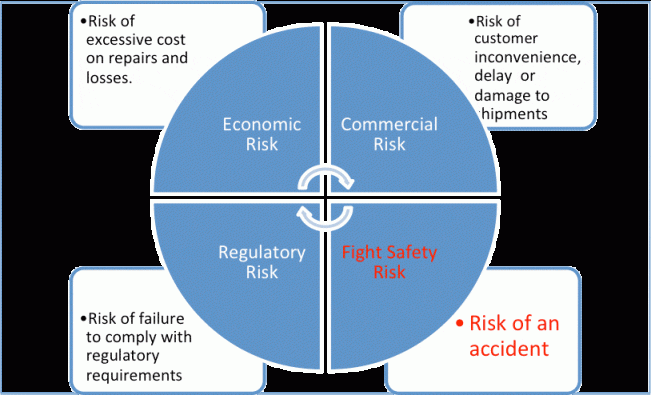Basics, Cargo Terminals, Freight Forwarders, CARE, Ground Handlers, ULD Service providers, Safety
Regulations – Why Are They Needed?
Since the IATA ULD Regulations have just been published, why is such a document needed now? Why don’t we just carry on handling ULDs in the same way as has been done in the past?
Most people would have no difficulty understanding that the airline industry needs to be closely regulated in order to deliver safety, and so it may not come as a surprise to our readers that the “R” in ULD CARE name stands for Regulations, which plays a major part in ULD operations.
There are actually a number of good reasons for not carrying on the way we do now, probably the #1 reason has to be that, surprising to some, ULDs are already just as regulated as any other piece of aircraft equipment. The moment a ULD is placed inside the aircraft it is subject to the same regulatory requirements as any other component on the aircraft. In fact ULD’s have to pass the same level of scrutiny as do restraining straps or even aircraft brakes. Once an airline owns and operates ULDs there are risks to be recognized and managed. Many people would choose to say that the biggest risk with ULDs is not having a sufficient number to operate, but there is much more risk around ULDs than just running out. Like all risk, it needs to be managed.
In the following chart the 4 risks associated with ULD are highlighted as a reminder to anyone involved in ULD that they are ever present.

The new IATA ULD Regulations can take a big load out of the risk management burden. They create the opportunity to establish predictable and reliable systems that deliver risk free ULD operations. Many of the members of ULD CARE have a responsibility for ULD operations and so have an appreciation of the risks involved. The contribution of the new IATA ULD Regulations will be welcome news.
Why a specific set of ULD regulations after all these years? Well, ULDs have always been regulated. The requirements for cargo and baggage restraint, and the use of ULDs are laid out in the Weight and Balance Manual(s) (WBM) of every aircraft operated by every airline. This is a regulatory requirement for which the airline is responsible to its National Civil Aviation Authority (NCAA). Airlines have always been required to manage their ULD operations according to applicable local regulations. One major change that has occurred over the last many years is that a number of non-airline organizations are now playing a central role in managing ULDs. As illustrated in the schematic, in today’s world, airlines play a minor role in ULD operations while a large and far flung network of service providers work daily with ULDs.
These organizations are not regulated by or responsible to NCAA’s and are all too often unaware of their responsibilities regarding ULD.

The publication of the IATA ULD Regulations is an initiative to provide the entire air cargo industry from the largest airline to the smallest service provider, wherever they may be located, with a single point of reference for all aspects of ULD activity, be it regulatory, design or operational.
We will use subsequent editions of this newsletter to go into more detail of the contents of the ULD Regulations, but for now we’d like to highlight some key features:
• Layout follows same format as IATA Dangerous Goods Manuals. This makes it easy to use
• Requirements for training standards, are similar to those followed for Dangerous Goods handling
• Responsibilities of airlines and other parties handling ULD’s are clearly defined
• Coverage of airworthiness and regulatory requirements and the practices required by these requirements
• The regulations cover ULD operations including
– Continuing Airworthiness
– Storage
– Transport and movement
– Buildup and Breakdown
– Special purpose ULD
ULD CARE recommends to all its readers to purchase a copy of the IATA ULD Regulations and start seeing the benefits for themselves.


